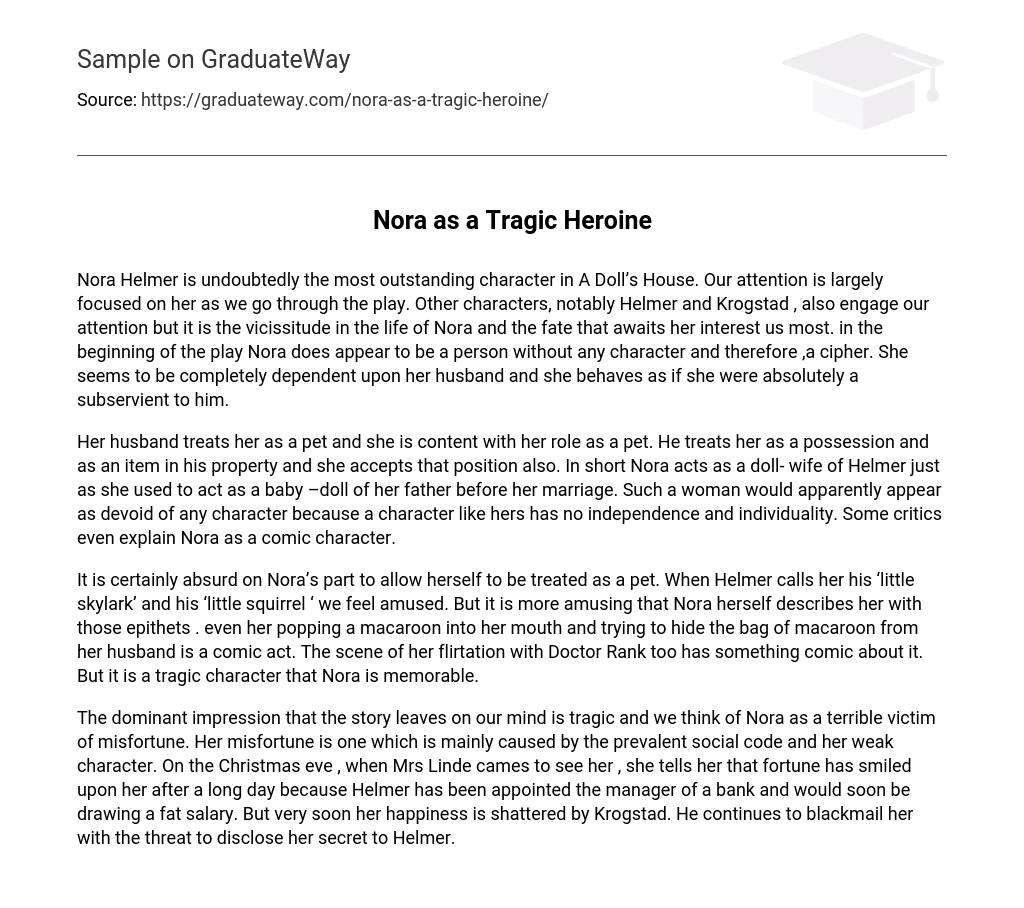Nora Helmer stands out as the most prominent character in A Doll’s House, capturing our attention throughout the play. Although other characters like Helmer and Krogstad also engage us, it is Nora’s unpredictable journey and the impending fate that intrigues us the most. Initially, Nora appears to lack any distinct qualities, making her seem insignificant. She heavily relies on her husband and acts like she is completely submissive to him.
Nora is treated by her husband as a pet, a possession, and an item on his property. She is content with these roles and accepts them willingly. In essence, she behaves as a doll-like wife to Helmer, just as she used to be a doll-like baby to her father before getting married. This kind of woman may seem lacking in character because she has no independence or individuality. In fact, some critics view Nora as a comedic character.
Nora allowing herself to be treated as a pet is undeniably absurd. Helmer’s nicknames for her, such as ‘little skylark’ and ‘little squirrel,’ may amuse us, but it is even more amusing that Nora herself describes herself with those labels. Even her surreptitious consumption of a macaroon and attempt to hide the bag from her husband elicit laughter. The scene in which she flirts with Doctor Rank also possesses comedic elements. However, it is Nora’s tragic nature that truly makes her memorable.
The story leaves a tragic impression on our mind, making us see Nora as a victim of misfortune caused by both the social code and her weak character. On Christmas eve, Mrs Linde informs Nora that her fortune has taken a turn for the better, as Helmer has been appointed the manager of a bank and will soon receive a substantial salary. Unfortunately, Krogstad soon shatters her happiness by blackmailing her, using the threat of revealing her secret to Helmer.





